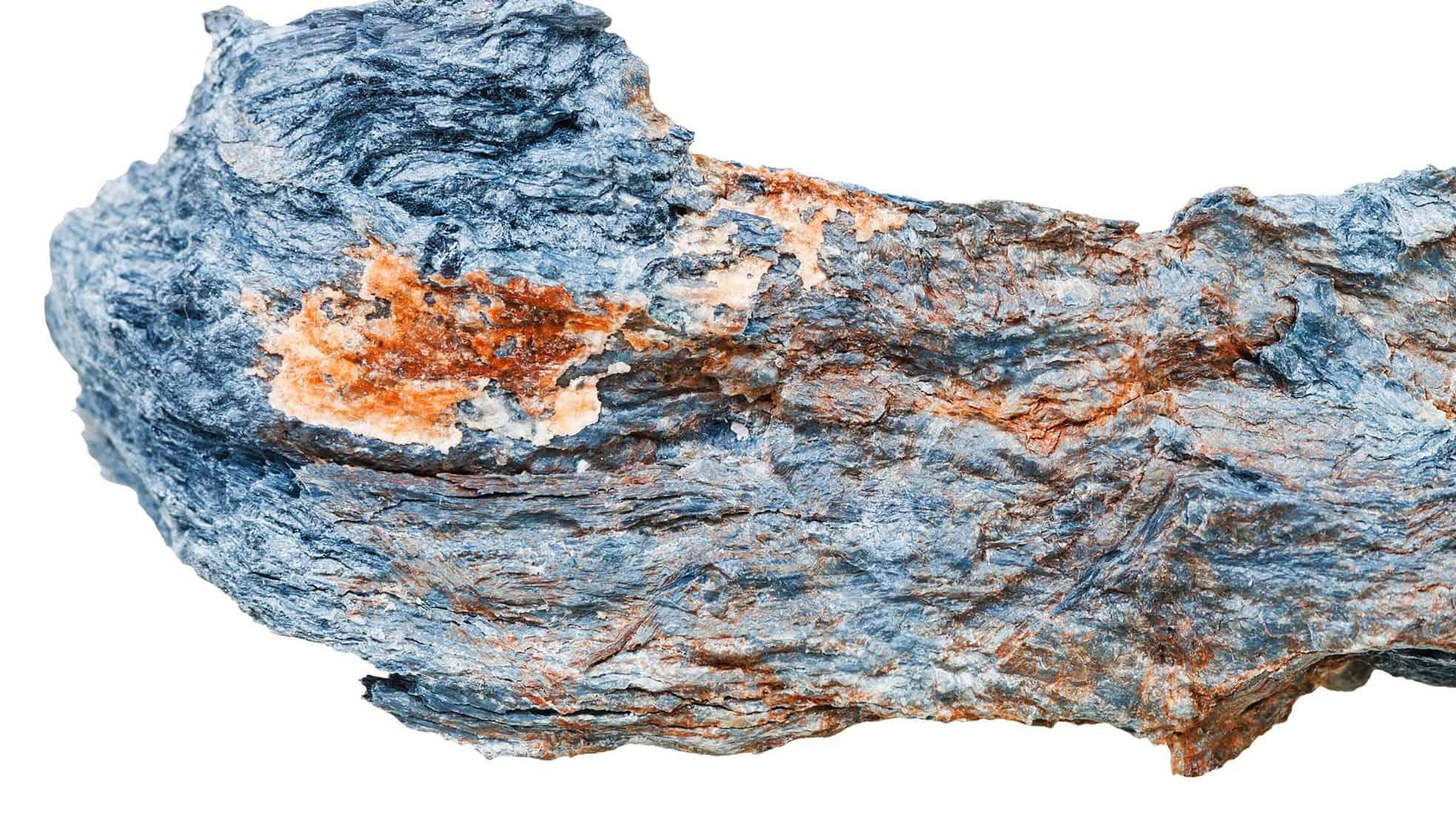The website already discusses various health effects that asbestos exposures trigger. We know how dangerous airborne asbestos and asbestos fibres are.
Another part of our website also discusses, in detail, how to identify asbestos. Make sure that you know it and prevent being exposed to asbestos.
But to recap the health effects once again, asbestos-containing products pose a danger when one inhales its microscopic fibers. These microscopic fibers lodge into the lung and can cause lung cancer.
Asbestos-containing materials, with logic, also cause exposure to asbestos. There is also mesothelioma risk ad carcinogenic risks. (Carcinogenic risks mean these have potential for cancer.)
Your everyday materials like talcum powder, ceiling tiles, and pipe insulation may contain asbestos minerals, as it is a naturally occurring mineral. Hence, occupational safety is a must.
One cannot overemphasize how asbestos dangerous is and related asbestos materials. Always check your plumbing materials or readily available list of asbestos products to limit exposure.
Asbestos Detection in the Body

The detection of asbestos types in one’s body happens through chest x-ray. It is the most pivotal and common tool in detecting asbestos exposure causes.
Other tests for detection include high resolution computerized tomography and pulmonary function tests.
There are times when one needs biopsy to detect asbestos fibers in lung tissue. But, one does not always need this to make a clinical diagnosis.
Yet, reports say biopsy may not be the most reliable test to determine asbestos exposure.
Then, there are less invasive tests to detect asbestos fibers. The tests happen through sputum or bronchoalveolar lavage fluid.
Regardless of which test is in use, these do not always reveal the amount of asbestos a person may have. This does not always show the amount of asbestos exposure, too.
The tests also do not predict whether an asbestos-related disease will develop.
Treatment Options For Asbestos Exposure
The number of treatment options for people suffering from asbestos exposure has limits. This includes lung or pleural diseases from asbestos exposure.
The best steps to take are to stop any further exposure and quit smoking. Once these diseases develop, they stay the same or get worse without more exposure.
For cancers that asbestos exposure has caused, treatment options include surgery or chemotherapy.
Pleural effusions, where fluid builds up in the lungs due to asbestos exposure, can also be an early sign of mesothelioma. It’s important to get further testing if this happens. Finding mesothelioma early and getting treatment can improve chances of survival.
More research could lead to better treatments for asbestos-related lung and pleural diseases.
Global Health Impact of Asbestos
Asbestos has caused the most deaths out of any cancer-causing substance. Chrysotile asbestos is its main type used in business.
Several thousand people around the world die each year due to asbestos exposure. In 2016, about 219,000 people worldwide died because of asbestos-related illnesses.
Out of these dates, 63% of all cancer deaths is traceable to work. This statistic comes from GBD 2016 Occupational Risk Factors Collaborators.
In places where people have higher incomes, chrysotile asbestos exposure caused most work-related cancer deaths. Around 80% of these deaths are due to asbestos exposure. This is true for regions like Australasia, Western Europe, and parts of North America and Asia.
Why is this the case? These regions used a lot of chrysotile asbestos in the past, which peaked three or four decades ago.
Yet, this does not mean that chrysotile asbestos exposure will not impact regions with lower incomes. In these places, asbestos usage is still rampant.
Unless we make changes to stop people from chrysotile asbestos exposure now and in the future, more will get sick.
Stance of Major Organizations On Asbestos
Given its various types and effects, you might wonder where an international agency or organization stands. Whether it’s to call for a geological survey or ban asbestos in building materials, awareness of their stance helps.
Below is a quick rundown of the asbestos stance of orgs like WHO.
The World Health Organization
The World Health Organization says asbestos exposure causes a lot of workplace-related cancers. It says asbestos, including chrysotile, can cause mesothelioma.
The WHO also links asbestos to lung, larynx, and ovarian cancer. Then, they also warn about asbestosis (lung scarring).
The WHO also cites other effects of asbestos exposure. This includes problems with the lining of the lungs, like thickening or fluid buildup.
In 2003, the WHO focused on battling asbestos-related diseases. In 2007, the World Health Assembly (WHA) further discussed how to get rid of asbestos illnesses.
The WHO also made plans to get rid of asbestos exposure. They stated that stopping the use of all kinds of asbestos is the best way to do it. Regular risk assessment of building materials, as well as a geological survey, are also suggestions.
The International Agency for Research on Cancer
The International Agency for Research on Cancer is another renowned international agency.
For IARC, all types of asbestos, including chrysotile, can cause cancer in humans. They say there’s strong proof that asbestos, including chrysotile, causes mesothelioma.
IARC also claims evidence that asbestos exposure causes throat, stomach, and colon cancers. Like other organizations, they call for a geological survey of commercial forms of asbestos.
The International Labor Organization
In 2006, the International Labor Conference decided to do something about asbestos. They said the best way to protect asbestos workers is to stop using it in building materials.
They also said ILO 162 Convention safety rules on asbestos is not meant to say that we should continue using it.
Asbestos Alternatives: Safer Options for Industry
As an alternative to many types of asbestos, industries might want to explore the following options.
Cellulose-Based Materials
One good option is to use materials made from cellulose. Cellulose comes from plants like wood and cotton.
Cellulose is lightweight, flexible, and can break down naturally. One uses it for insulation (e.g., pipe insulation, electrical insulation), fireproof coatings, and car parts.
See, not only asbestos insulation exists. Cellulose is proof that there are more materials better than many types of asbestos.
Then, in buildings, cellulose insulation keeps heat in and noise out, like asbestos. But it’s safe for people and the environment. This is much better than exposing oneself to asbestos fibers.
It also helps save energy and keeps the air indoors clean. In cars, cellulose parts are strong but not heavy.
Cellulose is also better than asbestos products because they’re safer even upon disposal. Thus, this promotes better occupational safety.
Using cellulose-based materials is a good idea for industries. They work like asbestos but without any of the dangers to people or the environment.
The next time a company considers still using crocidolite asbestos or other asbestos types, it might be better to do away with asbestos insulation and asbestos products. After all, this alternative exists.
Ceramic Fiber
Another choice instead of asbestos materials is ceramic fiber. It’s made from stuff like alumina and silica.
Ceramic fiber is good at keeping things hot without catching fire. It’s used in big ovens and machines where it gets hot.
It can do these things that asbestos-containing materials do, but without the danger of exposure to asbestos. It’s safe for people because it doesn’t let out any harmful stuff when it’s hot or gets moved around, unlike amphibole asbestos fibers.
Ceramic fiber is light and easy to use. It helps keep things safe from fire in places where there’s a risk of fire. It comes in different shapes, so one can use it in lots of ways.
Synthetic Mineral Fibers
Instead of asbestos types, synthetic mineral fibers are a good option. They’re made from natural minerals like sand and rocks. These fibers are good at keeping heat in and sound out, like asbestos.
Buildings and cars for pipe insulation and soundproofing may also use synthetic mineral fibers. Yet again, this is a smarter, safer choice in comparison to amphibole asbestos fibers and other asbestos-containing products.
Advances in Asbestos Detection and Monitoring
To move forward, it is beneficial to have awareness on asbestos detection.
New Ways to Spot Asbestos
Detecting many types of asbestos was tricky, but now scientists have come up with better methods. One way is through advanced technology that can identify asbestos fibers that occur naturally in materials.
Health administration officers and scientists use special microscopes and machines. They do this to see tiny particles of asbestos and amphibole forms that we can’t see with our eyes.
This also helps health administration and asbestos workers know if they’re around asbestos. This leads them to take precautions to stay safe.
Another way is using special gadgets that can detect asbestos in the air. These gadgets can sense even tiny amounts of asbestos particles and natural deposits floating around.
This is super important, especially in places like old buildings where asbestos might be hiding. One can also do this when dealing with commercial products.
With these new methods, it’s easier to find asbestos and its natural deposits. This also protects people from getting sick from commercial products and asbestos exposures in the long run.
Faster and More Accurate Testing
Testing for asbestos used to take a long time, but not anymore! Scientists have developed faster ways to test asbestos products (e.g., plumbing materials) and asbestos types.
Now, instead of waiting weeks for results, they can get them in just a few hours.
This is great news because it means workers don’t have to wait around to know if they’re in danger.
Not only are the tests faster, but they’re also more accurate. That means they’re better at telling if something has asbestos or not.
With these advancements, workers can quickly know if they need to take action to avoid asbestos exposure.
Remote Monitoring for Safer Environments
Imagine being able to check for asbestos without even being near it! That’s possible with remote monitoring.
Yet scientists have developed systems that can monitor asbestos levels from a distance. They use sensors and cameras to keep an eye on asbestos in buildings or industrial sites.
If the levels get too high, the system sends a warning so workers can take action right away.
With these new advances in asbestos detection and monitoring, staying safe around asbestos is easier than ever. Scientists are always working on new ways to protect people from this harmful substance.
Asbestos Regulations in the United States
In the United States, the Environmental Protection Agency (EPA) and the Occupational Safety and Health Administration (OSHA) oversee matters about asbestos products and asbestos types. Each is a national institute that protects workers and the public from the health risks of asbestos exposure.
The Clean Air Act, administered by the EPA (another national institute), regulates the manufacturing, processing, and distribution of asbestos products. It also sets standards for the emission of asbestos fibres into the air (i.e., airborne asbestos) during manufacturing processes.
Additionally, the Toxic Substances Control Act (TSCA) grants the EPA authority to regulate the use of asbestos in various commercial products and asbestos-containing materials.
OSHA, on the other hand, enforces regulations to protect workers from asbestos exposure in the workplace (e.g., asbestos mining, and plumbing materials).
These regulations include requirements for asbestos awareness training, proper handling and disposal of asbestos-containing materials, and the use of protective equipment such as respirators and protective clothing.
Furthermore, individual states may have their own asbestos regulations that supplement federal requirements. Some states have enacted stricter regulations or implemented additional measures to address asbestos hazards in buildings and construction projects.
Asbestos Policies in the European Union
In the European Union (EU), asbestos regulations are governed by several directives aimed at protecting public health and the environment. The main directive concerning asbestos is the Asbestos Directive (Directive 2009/148/EC), which establishes measures to prevent exposure to asbestos in workplaces.
The Asbestos Directive requires EU member states to take measures to identify and assess the risks of asbestos types in workplaces, as well as to establish procedures for removing asbestos. They check those at risk such as ceiling tiles, roofing shingles, plumbing materials, and other asbestos products.
This is also for safe removal and disposal of asbestos-containing materials. It also mandates regular medical examinations for workers who may be exposed to many asbestos types.
In addition to workplace regulations, the EU has implemented measures to address asbestos hazards in buildings and construction projects.
The Construction Products Regulation (Regulation (EU) No 305/2011) sets requirements for the use of construction materials, including restrictions on the use of asbestos-containing products.
Furthermore, the EU has established a European Asbestos Database to facilitate information sharing and monitoring of asbestos-related risks across member states. This database provides valuable data for policymakers, researchers, and public health authorities to track asbestos exposure levels and implement effective control measures.
Asbestos Policies in Australia
In Australia, asbestos regulations are enforced at both the federal and state/territory levels. The federal government regulates asbestos importation, manufacture, and use under the Customs (Prohibited Imports) Regulations 1956 and the Industrial Chemicals (Notification and Assessment) Act 1989.
At the state and territory level, regulations vary, but most jurisdictions have adopted measures to address asbestos hazards in workplaces and the built environment. These measures include requirements for asbestos management plans, asbestos removal licensing, and guidelines for safe handling and disposal of asbestos-containing materials.
In addition to regulatory measures, Australia has implemented initiatives to raise awareness about asbestos-related risks and promote prevention strategies.
The Asbestos Safety and Eradication Agency (ASEA) was established to coordinate national efforts to eliminate asbestos-related diseases and support affected individuals and communities.
Furthermore, Australia has implemented a National Strategic Plan for Asbestos Awareness and Management to guide policy development and action at all levels of government.
This plan aims to raise awareness about asbestos hazards, improve asbestos management practices, and support research into asbestos-related diseases.
In conclusion, asbestos regulations vary from country to country, but they all share the common goal of protecting public health and preventing asbestos-related diseases.
Whether through federal laws, EU directives, or state-level regulations, governments around the world are taking action to address asbestos hazards in workplaces and the built environment.












